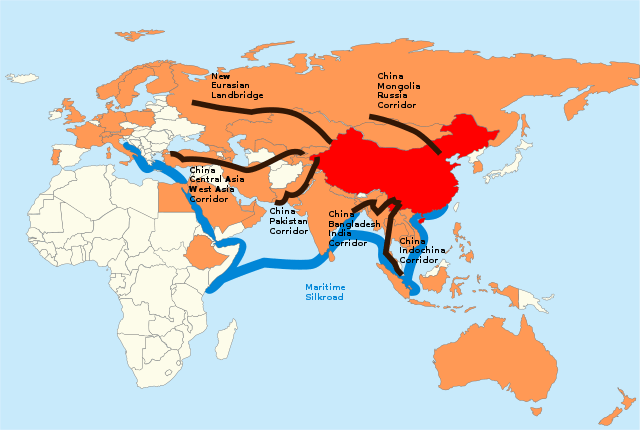Tajikistan now hosts the first Belt and Road (B&R) mega monitoring station.
According to Lanzhou University, the first Belt and Road (B&R) mega monitoring station for the environment and climate has begun operations in Tajikistan. According to Huang Jianping, an academician with the Chinese Academy of Sciences and professor at Lanzhou University, this observation station in Shaartuz, Tajikistan, offers thorough observation data for dust, pollutants, and climatic components in important areas of Central Asia. According to Huang, it can offer warnings for meteorological calamities and solutions to combat climate change. The station is a component of the B&R climate and environment observation network, which was developed cooperatively by Chinese and foreign universities and government agencies at the Lanzhou University. The observation network was started in Lanzhou, the country’s capital, in 20161. It is the most recent component of an expanding network of LiDAR (light, detection, and ranging) systems that spans across a crucial BRI corridor exposed to severe weather and is linked to Beijing’s larger technological goals. But there are concerns about whether the station could be utilised for security and surveillance due to its location and the Tajik government’s close ties to Beijing.
The Belt and Road Initiatives (BRI), the largest infrastructure plan in the world, was introduced in September 2013 to better utilise excess industrial and financial resources in China. High-speed rail lines, coal and hydropower plants, ports, roads, bridges, and tourism-related improvements are a few of them. Pushing roads and rail freight lines across some of the biologically richest regions of the planet has been a common part of many BRI projects. However, there are always a number of factors at play when nations criticise Chinese BRI plans. The World Wildlife Fund and HSBC cautioned that the BRI could have an impact on numerous important biodiversity hotspots, putting some threatened species in jeopardy2. Six new dams on the main river are reportedly planned for the Mekong River basin, where major BRI dam investments are being made, and they might make 64 species vulnerable, 30 species endangered, and 2 highly endangered3. Another significant source of greenhouse gas emissions is hydropower facilities. The establishment of industrial parks or special economic zones may have a substantial negative impact on the environment in terms of toxic waste, greenhouse gas emissions, and excessive water use. Since many initiatives, particularly those affecting indigenous and local communities throughout Asia, Africa, and Latin America, have significant negative effects on forests and other ecosystems, the BRI projects have already prompted demonstrations and are fiercely opposed by conservationists. Due to the fact that China provides the majority of the financing for the BRI and that these projects follow the “host country principle,” which will continue to harm other connected countries4.
China has shifted from a defensive to an offensive strategy in an endeavour to overtake the United States as the world’s dominant superpower. They introduced the “Green BRI” idea in 2017, trying to improve the initiative’s environmental credentials after facing criticism from international environmentalists. But it’s still not apparent how the BRI relates to sustainability5.
Bradley Jardine, managing director of the Oxus Society for Central Asian Affairs, told RFE/RL that stations like those in Shahritus depend on meteorological satellites that may be of a nature comparable to the object that had lately flown erratically across the United States, though its exact extent is unknown. In addition, earlier this year, the U.S. Air Force shot down a high-altitude Chinese balloon that Beijing said was only used for climate-related research. The balloon had previously flown across Alaska, western Canada, and much of the United States. According to American sources, it was equipped with a lot of equipment for spying on critical regions. The Canadian military added that it was employed for region- wide surveillance. According to Huang Zhongwei, a professor at Lanzhou University, seven stations have already been put into operation in China, while one station has been opened in Peshawar, Pakistan. The network can keep an eye on the long-distance movement of sand and dust as well as the local diffusion law of air complex pollutants, supporting socioeconomic growth and playing a part in research on global climate change, among other things. But there are concerns about whether the station could be utilised for security and surveillance due to its location and the Tajik government’s close ties to Beijing.
According to a 2019 report by the Australian Strategic Policy Institute (ASPI), Lanzhou University is one of at least 68 other Chinese universities that are officially described as components of the defence system or which in turn are supervised by China’s defence industry agency, the State Administration of Science, Technology and Industry for National Defence. Lanzhou University has obvious connections to China’s defence industry. The Pamir Mountains and the Wakhan Corridor have generally been the centre of China’s security attention, according to Jardine, whereas the new station is situated in a different region of the nation “where there are less immediate security imperatives for China. Its unsustainable exploitation of natural resources and exportation of its deliberate contempt for the environment through a number of large-scale initiatives that are devastating for the world—one such example being its One Belt One Road initiative—now pose a serious threat to the global economy and health. Although it is thought that these advances will aid in studies on global climate change and help socioeconomic progress, there are questions about whether the station could be used for security and surveillance.












